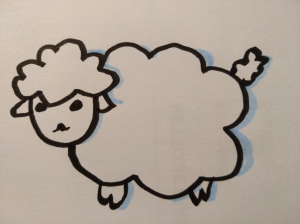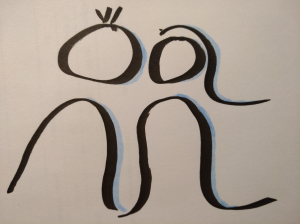Those of you who know me, won’t believe the next bit: I just love being led! Not all the time, not by everybody, but there are situations where I absolutely prefer good leadership over no or poor leadership.
I even really enjoy leadership when dancing the tango Argentino. And I enjoy agile leadership. You might think they do not have too much in common, but you are wrong. Before I point out a few similarities, let me introduce:
Agile Leadership
Beyond hierarchies the re is a lot of leadership in every social community. In agile context the principles are different than in traditional context, I am a big fan of the so-called leadersheep principles, pointing out a new style of leadership. Illustrated with a couple of sheep, the postcards of IT-Agile remind me every week of a new principle. I will introduce them below.
re is a lot of leadership in every social community. In agile context the principles are different than in traditional context, I am a big fan of the so-called leadersheep principles, pointing out a new style of leadership. Illustrated with a couple of sheep, the postcards of IT-Agile remind me every week of a new principle. I will introduce them below.
The Tango
Do you know tango Argentino? If not, search in You Tube, for example this film for beautiful music and pictures, or a quick look at a couple showing a lot of what I think is really important in tango. As I am a woman, I will talk of “she” as the follower, but actually in German tango context there are more and more dance couples playing with roles. In the following I will point out a few aspects most important to me, they are based on a nice article on leading and following in tango
Leadership as an Invitation
In tango I prefer to dance with an embrace that shifts between close and open. As a follower I am not moved (pushed and pulled) around by the leader but invited to move by myself. The leader proposes a movement, the follower has the choice to do it or not. She accepts and dances it, and then the leader fol lows her in order to connect to the next movement. And the follower always has the option to ornament the movements, by her own choice. It takes long to get that harmony in accepting and extending leadership.
lows her in order to connect to the next movement. And the follower always has the option to ornament the movements, by her own choice. It takes long to get that harmony in accepting and extending leadership.
There are some leadersheep principles that fit: “Encourage leadership at all levels” and “be prepared for a long journey”. But also without those little wooly friends, I do see here the biggest similarity: leadership in agile cannot – even must not – be imposed aggressively. It is always a process where the partners solicit acceptance for leadership.
The Craft of Leading
Learning the art of dancing tango is a long journey, not only because of the leadership, but equally because of the techniques. If both leader and follower do not know the techniques on how to move they will have difficulties understanding each other. But also the leading techniques are to be learnt. In order to lead well, there are some concepts to be understood
- Lead softly and clearly. Leading strongly does not make it clear, but the follower feels abused. Like being yelled at.
- Think way in advance and leave slack so that the follower can react
- Use inclination to tell your follower early where you want to go
- Stand on your own feet and arrive with your whole body at the place where you want to go
- Do not insist if something goes differently than expected
I guess from the agile leadership perspective there is not much to add. It supports the principles: “Set the direction”, “admit mistakes” and “create a strong vision”. Just do not lead by command and order but by solicitation.
Getting Close
I already mentioned the embrace. The close embrace basically means that you dance with slightly leaning posture that typically joins the torsos of the two dancers from the tummy through the upper chest. Sometimes the cheeks even join. That definitely is close. I do not want to do that with everyone. I do not feel comfortable like that with everyone. I would need trust. While I feel comfortable by default with my most trusted dance partner (my husband), for other partners there are at least three prerequisites for this (apart from the fact that the leader should be able to lead!):
- It helps to have the right proportion in body length
- It helps if both do not smell, or the smell is nice
- The embrace needs to feel great
I guess most of you do not cuddle at work, not even in an agile team. But trust obviously makes leadership easier. No need for fears or threatening (“help people deal with fear”, “forget carrot and sticks”). In German there is a proverb saying “ich kann jemanden gut riechen“, that does not translate directly. But it expresses that you like the smell of someone, meaning, you like to stick with this person. That, I feel, is very crucial to agile leadership.
Feedback Culture
Tango is all about feedback. One of the reasons for a close embrace. But also, very relevant for the invitations for movements. Agile is all about feedback as well. Agile leadership as well. Well, though this is a no-brainer, actually it was the reason why I got the idea for this article.
Other Leadersheep Situations
There are more leadersheep principles that do not that easily relate to dancing tango. My favorite is “address the elephant in the room”. If this a leadership principle, I like leading. Even and especially in my role as a quality person. In whatever situation. “Improve the system” is another principle where leadership is another day to day activity of agile teams. “Be a teacher” and “lead by example” are the remaining two principles I had not yet mentioned. They do relate directly to Tango situations, as the couple learns from each other. Mutually. Always. As I would want to do with my agile leader.
To extend this article, I wonder if I should give a class on leadership by tango (together with a tango leading person!), What do you think? Would you want to learn leading agile by tango?
